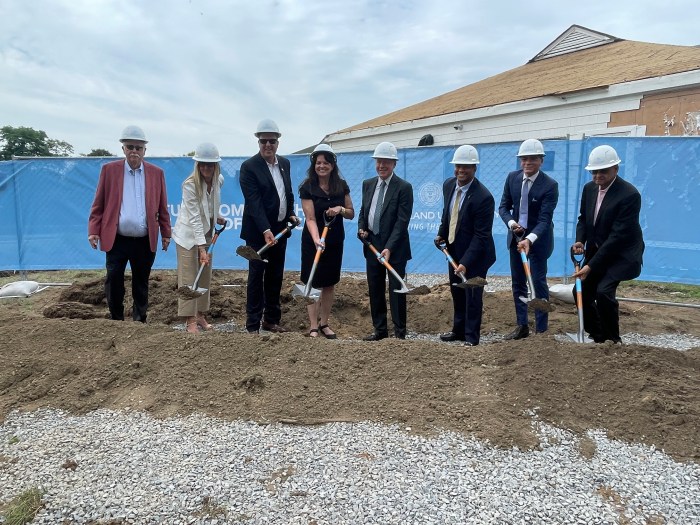Student government denies Native American head on mural

A recent idea to include the image of a Native American head on a parking lot mural at Syosset High School was met with backlash and protest by students, past and present, as well as community members. Due to overwhelming disapproval of the proposed act, the Syosset Student Government held a public forum on Friday, Nov. 4, to allow a platform for the voices of the student body to be heard and reflected upon. After careful deliberation, it was decided that they would not approve of the inclusion of the image.
The school’s “Braves” mascot has been a point of contention for some time, hailed as an example of cultural appropriation. Many professional athletic teams with similar mascots, such as the Cleveland Indians, the Washington Redskins and the Atlanta Braves, have been faced with the same criticisms among a disgruntled Native American community and other groups concerned with stigmatization of minority sects in America.
The idea was put forth as a way to foster school spirit at the high school, but was instead met by the contrary. In response, Janvi Pamnani, a senior at Syosset High School, started a petition on change.org, described on the website as “the world’s platform for change.” The petition reads as follows:
“The Syosset student parking lot is going to be painted with a Native American head to increase school spirit. Despite being heavily offensive toward the local Native American communities, Syosset is continuing with this appropriation. While school spirit is crucial to the social health of the school, Syosset should not degrade Long Island tribes by dehumanizing them to a mascot, equivalent to bulldogs and bears for other schools. A simple ‘S’ or scripted ‘Syosset’ would achieve the same purpose without appropriating another’s culture.”
Though the initial intent was to reach 200 signatures, within days a total of 219 signatures was achieved, signaling the devotion of the community to halt the process in its tracks.
Comments left on the online petition were generally marked by anger and embarrassment, calling the idea “offensive” and an “archaic and racist depiction of an already marginalized group of people.” Other commenters pointed out the necessity of changing the mascot altogether.
“Having a conversation about changing the mascot, rather than painting it on a parking lot, would be an excellent way to shape Syosset students into more informed and active citizens,” said Samantha Daniels of Syosset High School’s class of 2012. “Our history books may be whitewashed but that doesn’t mean schoolwide discussion needs to be.”
Another commenter, Justin Cristando, touched upon the idea that Syosset must uphold its prestige as a diverse community stating, “In order to continue Syosset’s reputation of inclusiveness and acceptance of all cultures and people, it is important that our school does not participate in the reduction of Native American people and culture.”
Though many expressed wishes to see the mascot changed altogether, the school district has taken certain actions to lessen the offensive nature of it. One such measure includes the use of a “Brave Cat” mascot, a panther-like animal used in place of the original Native American, at sporting events.
Taking note of the dissatisfaction of the community as seen in the student-led petition, the Syosset Student Government addressed the issue in a public forum setting. Though opinions ranged, fostering a heated debate, the decision was made to deny approval for the proposed rendering.
According to a statement released by the student government, the outcome “was ultimately determined by a very simple principle: If one individual is personally offended by an avoidable situation it is our duty as representatives of the student body to ensure a safe, secure and supportive learning environment.”
The statement went on to explain that in such a situation, the risks likely outweigh the benefits, and that there are innumerable alternatives to muster district-wide spirit and unity.


































